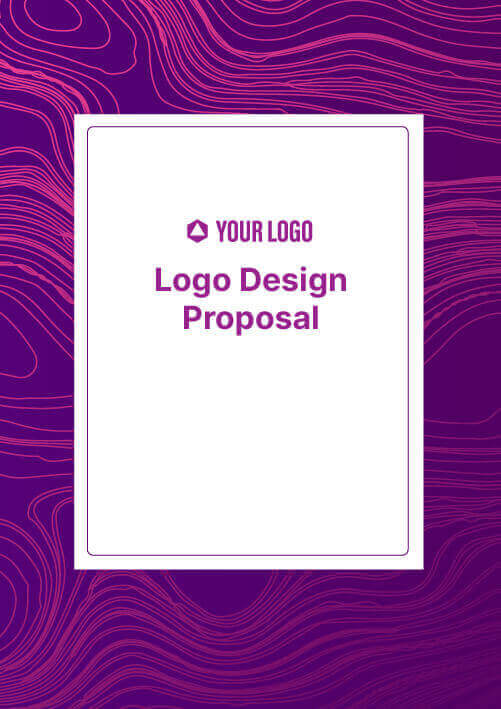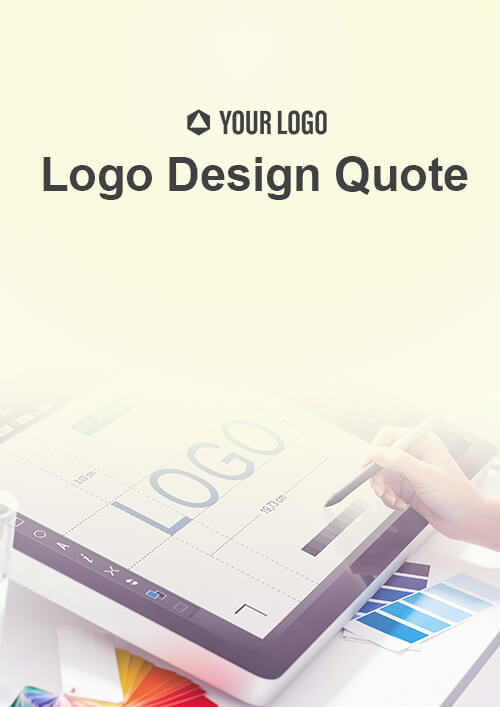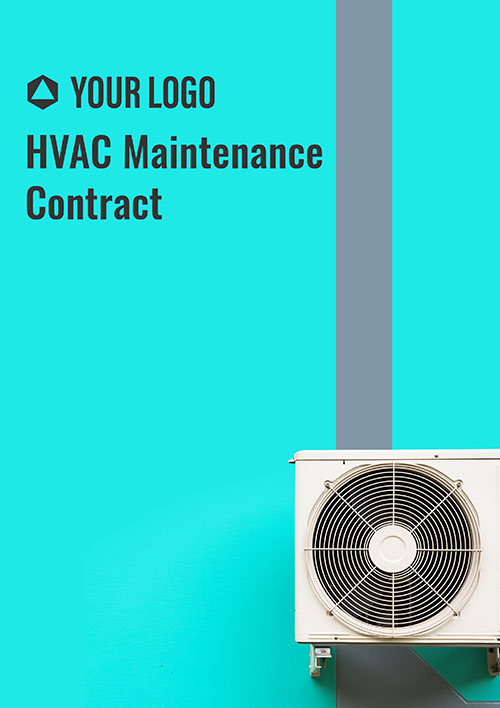Empty space
1x
2x
3x

Logo Design Contract
Empty space
1x
2x
3x
Prepared for:
[Client Company]
Prepared by:
[Logo Design Company]
Logo Design Contract
Logo Design Contract
This Logo Design Contract (hereby referred to as the “Contract”) is made and entered into on [Date] (hereinafter referred to as the "Effective Date"),
By and Between
[Client Company], with its registered office at [Address] (hereby referred to as the “Client”); and
[Logo Design Company], with its registered office at [Address] (hereby referred to as the “Logo Designer”).
The Client and the Logo Designer shall be collectively referred to as “Parties” and individually as “Party”.
WHEREAS the Client wishes to engage the Logo Designer to provide Logo Design services as described in this Contract and the Logo Designer agrees to provide such services.
NOW, THEREFORE, in consideration of the mutual covenants and commitments contained herein, as well as other goods and valuable consideration (the receipt and sufficiency of which are to be acknowledged), the Parties do hereby agree as follows:
Empty space
1x
2x
3x
Terms and Conditions
Terms and Conditions
1. Project
1. Project
This Contractor sets forth the terms and conditions by which the Logo Designer agrees to provide certain services as listed below. The Logo Designer accepts that it shall remain the exclusive and sole service provider for this project's term.
2. Services
2. Services
The Client hereby engages the Logo Designer to provide the following services:
Service Name | Description |
Animated Logo Design | [Description] |
[Service 2] | [Description] |
[Service 3] | [Description] |
3. Deliverables
3. Deliverables
This Contract includes the following deliverable items:
Deliverables/Milestones | Completion Date |
[Deliverable 1] | [Date] |
[Deliverable 2] | [Date] |
4. Compensation
4. Compensation
In consideration of the Services provided by the Logo Designer, the Client shall pay the sum of $[0.00] to the Logo Designer (hereinafter referred to as the "Total Fee"). A non-refundable deposit of $[0.00] shall be paid by the Client to the Logo Designer upon the signing of this Contract (hereinafter referred to as the "Initial Payment"). All fees shall be invoiced upon submission of deliverables to the Client. The Client shall make the payment to the Logo Designer within [number of hours] hours from the date of invoice. In case, the payments are not made in time, the Logo Designer can charge a late fee of $[0.00].
Please find below the rates of the services:
Description | Price/Hourly Rate | Quantity | Subtotal |
[Research] | $[0.00] | [0] | $[0.00] |
[Wireframes] | $[0.00] | [0] | $[0.00] |
[Design] | $[0.00] | [0] | $[0.00] |
[Add Service] | $[0.00] | [0] | $[0.00] |
Total (Incl. of all taxes): $[0.00]
5. Term
5. Term
This Contract shall commence as of the Effective Date. The deadline to deliver all the deliverables for this Contract is [Deadline Date].
6. Client's Approval
6. Client's Approval
The Client shall be notified and shall approve any and all materials before finalizing the project. The Client shall have permission to accept the work and request revisions if needed. The Client shall be entitled to [number of revisions] revisions. Any additional revisions beyond [number of revisions] revisions shall be chargeable at a rate of $[0.00].
7. Ownership Rights
7. Ownership Rights
The Client continues to be the sole and exclusive owner of any materials, data, ideas, or inventions shared by the Client with the Logo Designer during the term of this Contract. The Logo Designer has no right to use this proprietary information except to render the services mentioned in this Contract. Upon completion of the project, the Client shall own the copyrights for all the deliverables but only when the payment is made in full.
8. Representation and Warranties
8. Representation and Warranties
The Logo Designer and the Client represent and warrant all the rights, power, and authority to enter into this Contract.
The Logo Designer further warrants that:
- It shall perform the Services mentioned in this Contract professionally and efficiently;
- It shall comply with all the applicable laws;
- The Services and Deliverables are original and do not infringe upon any third party’s patents, trademarks, trade secrets, copyrights, or other proprietary rights;
- It shall adhere to the requested deadline and comply in any other manner by which the Client's requirements shall be fulfilled.
The Client agrees to provide all the necessary information, resources, and initial payment that might be necessary for the Logo Designer to render the services. The Client also warrants that the Logo Designer has the right to utilize the logo designs for its business promotional use such as on its website, portfolio, or proposals.
9. Termination
9. Termination
Either Party may terminate this Contract if any Party fails to perform any of its obligations under this Contract or if a breach of any the warranties provided herein, and if such failure is not cured within [number of days] days (unless extended by the Party) after written notice to the Party at fault, the Parties shall be entitled to seek and obtain all remedies available to it in law.
Upon termination of this Contract, the Logo Designer shall immediately deliver the Client with any and all work in progress or completed prior to the termination date, and the Client shall pay the Logo Designer an amount agreed in this Contract for the completed services and/or deliverables provided and accepted prior to the date of termination.
Upon expiration or termination of this Contract for any reason, each party shall promptly return to the other party all documents and other material containing confidential information.
10. Confidentiality
10. Confidentiality
All confidential information that is communicated to or obtained by either of the Parties in connection with the above-mentioned services, shall be held by them in full faith. At no time shall the Parties use any such confidential information obtained through this association, either directly or indirectly, for personal benefit, or disclose or communicate such information to any third-party. This provision shall continue to be effective after the termination of this Contract.
11. Relationship of Parties
11. Relationship of Parties
The Client is hiring the Logo Designer as an Independent Contractor. The Client and the Logo Designer shall not establish any partnership or employer-employee relationship.
12. Limitation of Liability
12. Limitation of Liability
In no event shall either Party be liable to the other party or any third party for any damages or any special, indirect, or consequential damages, that might result from any part of this Contract such as, but not limited to, loss of profit, revenue, or failure in the delivery of services.
13. Indemnification
13. Indemnification
Each Party indemnifies and holds the other Party and its authorized persons harmless from and against all claims, liabilities, losses, damages, costs, and expenses, suffered or incurred by them arising out of or in connection with this Contract unless there is an act of gross negligence, wilful misconduct or bad faith by either party.
14. Arbitration
14. Arbitration
In the event of any dispute arising in and out of this Contract between the Parties, it shall be resolved by Arbitration. There shall be [Number of Arbitrators] Arbitrators which shall be appointed by [Party Name]. The venue of Arbitration shall be [Venue/Location of Arbitration] and the seat shall be [State]. The Arbitrators' decision shall be final and will be binding on both the Parties.
15. Miscellaneous
15. Miscellaneous
- Assignability: Neither party may assign this Contract or the rights and obligations thereunder to any third party without the prior express written consent of the other Party which shall not be unreasonably withheld.
- Severability: In the event, any provision of this Contract is deemed to be invalid or unenforceable, in whole or part, that part shall be severed from the remainder of this Contract and all other provisions shall remain in full force and effect as valid and enforceable.
- Governing Law: This Contract shall be governed by and construed in accordance with the laws of the [State] without regard to conflict of law principles. If the disputes under this Contract are not resolved by Arbitration, the disputes shall be resolved by litigation in the courts of the [State/Court/Region] including the federal courts therein and all the Parties consent to the jurisdiction of such courts, agree to accept service of process by mail, and hereby waive any jurisdictional or venue defenses otherwise available to it.
- Entire Agreement: The Parties acknowledge that this Contract sets forth and represents the entire Contract between both the Parties. If the Parties are willing to change/add/modify any terms, they shall be in writing and signed by both Parties.
- Notice: Any notice that is required by this Contract shall be in writing and shall be given to the appropriate party by personal delivery or certified mail, postage prepaid, or any such delivery service provided.
- Force Majeure: Neither of the Parties shall be liable for any failure in performance of any obligation under this Contract due to causes beyond that Party's reasonable control (including and not limited to any pandemic, fire, strike, act, or order of public authority and other acts of God) during the pendency of such event.
Empty space
1x
2x
3x
Acceptance and Signature
Acceptance and Signature
The Parties agree to the terms and conditions set forth above as demonstrated by their signatures as follows:
[Client Company]
[Logo Design Company]
Signature
Assign signer 1
Name
Assign signer 1
Date
Assign signer 1
Signature
Assign signer 2
Name
Assign signer 2
Date
Assign signer 2
Empty space
1x
2x
3x
THANK YOU
THANK YOU
Empty space
1x
2x
3x
DISCLAIMER: Revvsales, Inc is not a law firm. The content provided herein is for general information purposes only, and does not constitute legal advice. Revvsales, Inc and its partners make no representation or warranty of any kind, express or implied, regarding the accuracy, adequacy, validity, reliability, availability, or completeness of any information mentioned hereunder. The use or reliance of any information contained herein is for your personal use and solely at your own risk. You agree to fully release and indemnify Revvsales, Inc from any liability associated with the use of this content. You are advised to obtain independent legal advice before taking or refraining from any action on the basis of the content provided here.
DISCLAIMER: Revvsales, Inc is not a law firm. The content provided herein is for general information purposes only, and does not constitute legal advice. Revvsales, Inc and its partners make no representation or warranty of any kind, express or implied, regarding the accuracy, adequacy, validity, reliability, availability, or completeness of any information mentioned hereunder. The use or reliance of any information contained herein is for your personal use and solely at your own risk. You agree to fully release and indemnify Revvsales, Inc from any liability associated with the use of this content. You are advised to obtain independent legal advice before taking or refraining from any action on the basis of the content provided here.















